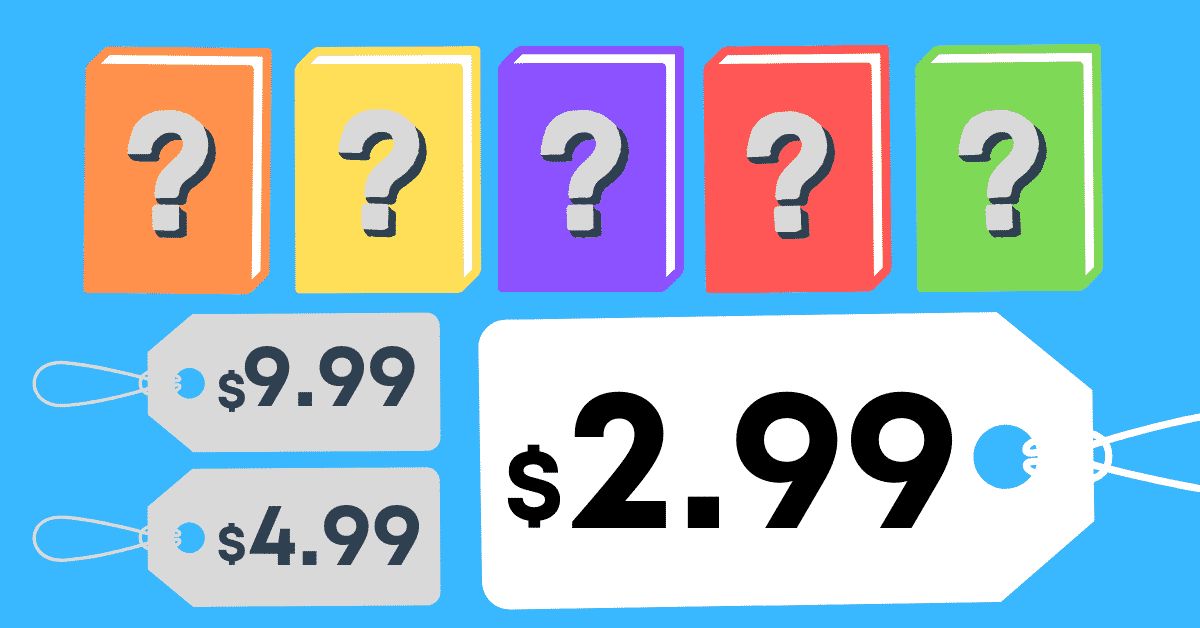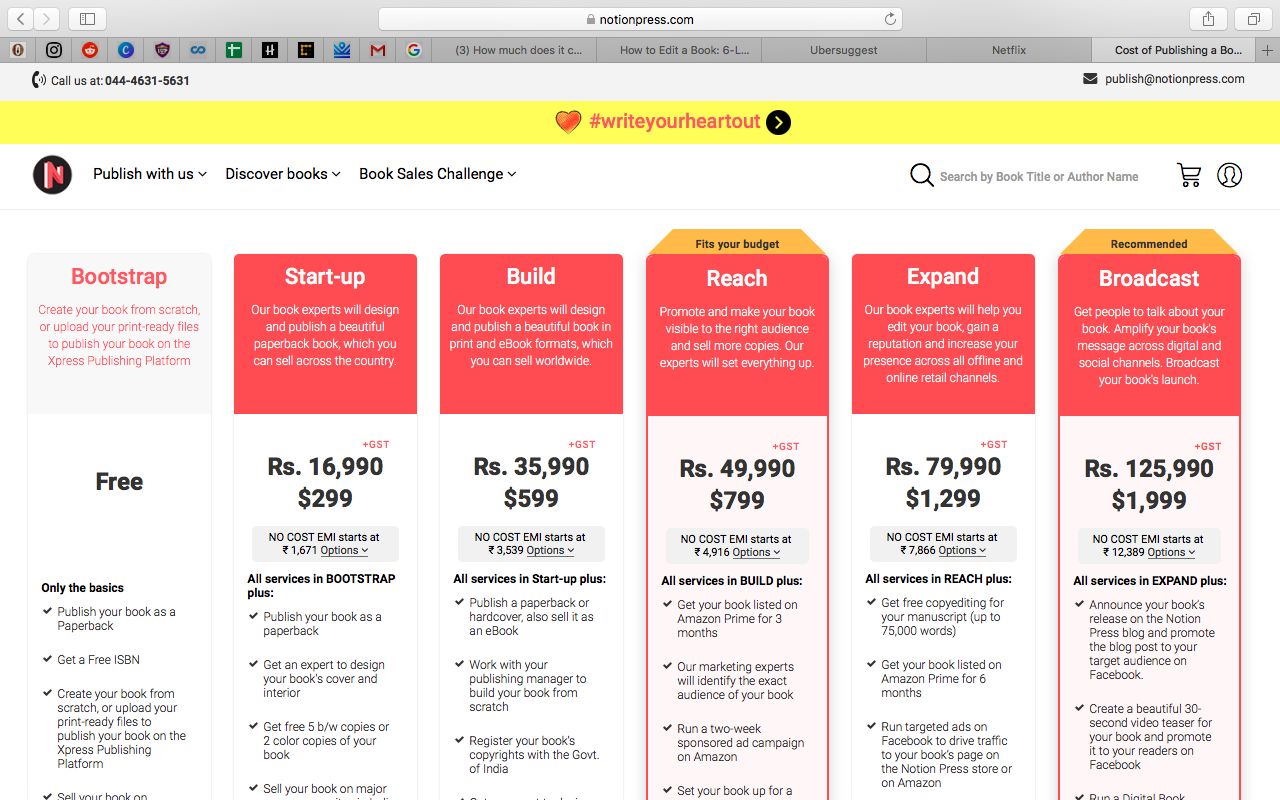Introduction
Welcome to the world of eBooks! In this digital age, eBooks have revolutionized the way we read, learn, and explore new information. As an aspiring author or someone interested in self-publishing, you may have come across the term “eBook manuscript” and wondered what it entails.
An eBook manuscript refers to the written content of your eBook, including the text, images, and any other elements that make up your book. It serves as the foundation of your eBook and plays a vital role in the success of your publishing venture.
In this article, we will explore the importance of a well-written eBook manuscript, the elements it should contain, and the essential steps to create a captivating eBook. Whether you are planning to submit your manuscript to a publishing company or self-publish, understanding these aspects will help you produce a high-quality eBook that captivates readers and establishes your credibility as an author.
So, why is a well-written manuscript so important? The answer lies in the fact that an engaging and well-structured eBook manuscript forms the backbone of a successful eBook. It sets the tone, effectively communicates your ideas, and ensures a pleasurable reading experience for your audience.
Now more than ever, readers value well-crafted content that is informative, engaging, and flawlessly presented. With thousands of eBooks available at their fingertips, readers are discerning and will quickly abandon a poorly written eBook in favor of one that offers a seamless and enjoyable reading experience.
Thus, a carefully crafted and polished manuscript is crucial in grabbing the attention of your target audience and keeping them engaged from start to finish. It can be the difference between your eBook being hailed as a masterpiece or being relegated to the bottom of the digital pile.
In the following sections, we will explore the key elements that contribute to a good eBook manuscript. We’ll delve into formatting and organization, the importance of proofreading and editing, cover design, and the publishing options available to you. By the end of this article, you will have a clear understanding of what it takes to create a compelling eBook manuscript that stands out in a saturated market.
Definition of eBook Manuscript
Before we dive deeper into the intricacies of eBook manuscript creation, it is important to establish a clear definition of what exactly constitutes an eBook manuscript.
An eBook manuscript is the written content that forms the core of your eBook. It encompasses not only the text but also any visual elements such as images, graphs, tables, or illustrations that enhance the reader’s understanding and engagement with the material.
Unlike traditional print manuscripts, eBook manuscripts are created and distributed in a digital format. This allows readers to access and enjoy your book on various electronic devices, such as e-readers, tablets, smartphones, and computers.
The digital nature of eBook manuscripts provides numerous advantages, such as easy accessibility, portability, and the ability to incorporate multimedia elements. Additionally, eBooks offer the potential for interactive features like hyperlinks, embedded videos, and audio clips, which can further enrich the reading experience.
Creating an eBook manuscript requires careful consideration of various factors. These include choosing the appropriate file format, determining the layout and formatting, and optimizing the manuscript for different screen sizes and reading platforms.
Moreover, an eBook manuscript must adhere to the guidelines and standards set by eBook retailers and distributors. These guidelines typically cover aspects like file size limitations, image resolution, supported file formats, and inclusion of metadata.
Ultimately, the goal of an eBook manuscript is to present your content in a visually appealing and reader-friendly manner. A well-crafted manuscript ensures that the text is clear, legible, and properly formatted, allowing readers to effortlessly navigate through chapters, sections, and subsections.
By understanding and defining the concept of an eBook manuscript, you set the groundwork for creating a compelling and professional eBook that resonates with your target audience. In the following sections, we will explore the essential elements that contribute to a high-quality eBook manuscript.
Importance of a Well-Written Manuscript
A well-written eBook manuscript is the cornerstone of a successful eBook. It holds immense importance and can greatly impact the reception and success of your work. Let’s delve into the reasons why a well-written manuscript is crucial:
1. Captivating and Engaging Readers: A well-written eBook manuscript has the power to captivate readers from the very first page. With attention spans growing shorter, it is essential to grab readers’ attention and keep them engaged throughout the book. A compelling manuscript, with a strong narrative and clear communication of ideas, ensures that readers are invested in your content.
2. Positive Reading Experience: Readers appreciate a seamless and enjoyable reading experience. A well-written manuscript ensures that the text flows smoothly, sentences are coherent, and ideas are presented in a logical manner. It eliminates confusion, allowing readers to focus on the content rather than struggling with grammatical errors or awkward sentence structures.
3. Professionalism and Credibility: A well-written eBook manuscript demonstrates professionalism and expertise in your chosen subject matter. It establishes your credibility as an author, giving readers confidence in the quality and accuracy of your content. This can result in positive reviews, recommendations, and increased readership.
4. Differentiation in a Saturated Market: The eBook market is flooded with thousands of titles, making it essential to stand out from the competition. A well-written manuscript with unique and compelling content helps your eBook grab attention and distinguish itself from others. It piques readers’ interest and entices them to explore your book amidst the sea of options.
5. Word-of-Mouth Recommendations: A well-written eBook manuscript has the potential to generate positive word-of-mouth recommendations. When readers find value in your content, they are more likely to share it with others, leading to increased exposure and potential sales.
6. Enhanced SEO and Discoverability: High-quality content is favored by search engines, improving your eBook’s visibility in search results. A well-written manuscript with relevant keywords, informative content, and proper formatting increases its chances of being discovered by readers searching for specific topics.
7. Better Reviews and Ratings: A well-written eBook manuscript increases the likelihood of receiving positive reviews and ratings from readers. Good reviews not only boost your eBook’s reputation but also encourage new readers to give it a try.
By recognizing the importance of a well-written manuscript, you lay the foundation for a successful eBook. In the next sections, we will explore the key elements that contribute to creating an exceptional eBook manuscript, ensuring it appeals to readers and garners positive attention.
Elements of a Good eBook Manuscript
A well-crafted eBook manuscript comprises several essential elements that contribute to its overall quality and appeal. Let’s explore these key elements that make up a good eBook manuscript:
1. Clear and Engaging Writing: A good eBook manuscript begins with clear and engaging writing. Use a conversational tone, avoid jargon, and ensure that your language is accessible to the target audience. Incorporate storytelling techniques, descriptive language, and captivating anecdotes to keep readers hooked.
2. Well-Structured Content: Organize your eBook manuscript into logical sections and chapters to provide a clear structure that guides readers. Use headings, subheadings, and bulleted or numbered lists to enhance readability and facilitate easy navigation through the content. Each section or chapter should flow seamlessly into the next, creating a cohesive reading experience.
3. Thorough Research: A good eBook manuscript is backed by thorough research. Gather relevant and up-to-date information from reliable sources to support your ideas and assertions. Properly cite your sources and provide a bibliography or reference section to enhance the credibility of your content.
4. Appropriate Length: Consider the ideal length for your eBook manuscript based on the content and genre. While there are no hard and fast rules, aim for a length that adequately covers the topic without overwhelming or leaving readers wanting more. Balance is key to keeping readers engaged and satisfied.
5. Visual Enhancements: Incorporate visual elements like images, graphs, charts, or illustrations to enhance understanding and engagement. Ensure that these visuals are of high quality, properly formatted, and add value to the content. Visuals not only break up the text but also make the eBook visually appealing.
6. Proper Formatting and Layout: Pay attention to the formatting and layout of your eBook manuscript. Use consistent fonts, sizes, and spacing to provide a visually pleasing reading experience. Consider the different devices and screen sizes your eBook will be viewed on, ensuring the text adjusts accordingly without compromising legibility.
7. Grammar and Spelling: Proofread your eBook manuscript thoroughly to correct any grammar or spelling errors. Use grammar-checking tools and seek feedback from beta readers or professional editors. A manuscript free of errors enhances the professionalism of your eBook and ensures a smooth reading experience.
8. Engaging Book Cover and Title: While not directly part of the manuscript itself, an engaging book cover and a compelling title play a crucial role in attracting readers. Invest in a professionally designed cover that accurately represents the content and genre of your eBook. Choose a title that grabs attention and piques curiosity.
By incorporating these elements into your eBook manuscript, you create a well-rounded and captivating reading experience for your audience. In the following sections, we will explore the crucial steps involved in formatting and organizing your eBook manuscript for publication, as well as the importance of proofreading and editing.
Formatting and Organization
Proper formatting and organization are essential elements in creating a visually appealing and reader-friendly eBook manuscript. Effective formatting enhances the reading experience and ensures that your content is presented in a clear and organized manner. Let’s explore some key considerations for formatting and organizing your eBook manuscript:
1. Consistent Font and Styling: Choose a font style and size that is easy to read on various devices. Stick to a consistent font throughout the eBook, including headings, subheadings, and body text. Use formatting options such as bold, italics, and underline sparingly to emphasize important information.
2. Chapters, Sections, and Subsections: Divide your eBook into chapters, sections, and subsections to create a clear and logical structure. Each section should address a specific topic or subtopic, allowing readers to easily navigate the content and find information of interest.
3. Headings and Subheadings: Use descriptive and concise headings and subheadings to guide readers through the eBook. Headings should convey the main idea of each section, while subheadings provide additional context or details. This helps readers skim through the eBook and locate specific information with ease.
4. Bulleted or Numbered Lists: Use bulleted or numbered lists to present information that is structured or sequential. This format breaks up the text and improves readability. Lists are especially useful for step-by-step instructions, key points, or summarizing key concepts.
5. Images and Visual Elements: Incorporate images, graphs, charts, or other visual elements to enhance understanding and engagement. Ensure that these visuals are properly formatted, aligned with the text, and have high resolution. Captions or descriptions can provide additional context and information about the visuals.
6. Hyperlinks and Cross-Referencing: Utilize hyperlinks to provide additional resources or references within your eBook. These links can direct readers to related websites, articles, or sources of further information. Cross-referencing allows readers to easily navigate between sections or chapters by providing clickable links. This enhances the user experience and enables readers to explore relevant content effortlessly.
7. Table of Contents: Include a comprehensive table of contents at the beginning of the eBook. This serves as a roadmap for readers, allowing them to quickly locate specific sections or chapters they may be interested in without having to scroll through the entire eBook.
8. Consistent Formatting across Devices: Keep in mind that readers may access your eBook on various devices with different screen sizes. Ensure that your eBook is responsive and adjusts its formatting accordingly to provide an optimal reading experience across devices.
By effectively formatting and organizing your eBook manuscript, you greatly enhance its readability and user-friendliness. A well-structured eBook allows readers to easily navigate, engage with the content, and fully immerse themselves in your book. In the next section, we will delve into the crucial steps of proofreading and editing your eBook manuscript to ensure it is flawless and professional.
Proofreading and Editing
Proofreading and editing are vital steps in the eBook manuscript creation process. They ensure that your content is error-free, polished, and ready for publication. Neglecting these steps can result in grammatical errors, typos, inconsistencies, and other issues that can detract from the overall quality of your eBook. Let’s explore the importance of proofreading and editing in more detail:
1. Grammar and Spelling: Proofreading involves thoroughly checking your manuscript for grammatical errors, punctuation mistakes, and spelling errors. Review each sentence and paragraph carefully to ensure correct usage of tenses, proper sentence structure, and accurate spelling. Use grammar-checking tools and seek feedback from beta readers or professional editors to catch any overlooked mistakes.
2. Consistency and Coherence: Editing involves reviewing your eBook manuscript for consistency and coherence. Pay attention to the flow and organization of ideas within chapters and sections. Ensure that your writing style remains consistent throughout the eBook. Check for logical transitions between paragraphs and ensure that your content aligns with your intended message and target audience.
3. Clarity and Readability: Focus on enhancing the clarity and readability of your eBook manuscript. Identify and rephrase any confusing or convoluted sentences. Use clear and concise language to convey your ideas effectively. Break up long paragraphs into shorter ones to improve readability.
4. Relevance and Accuracy: Scrutinize your eBook manuscript for accuracy and relevance of information. Ensure that any facts, statistics, or references are up to date and properly cited. Verify that your content aligns with your intended purpose and message, eliminating any irrelevant or outdated information.
5. Consistent Voice and Tone: Maintain a consistent voice and tone throughout your eBook manuscript. Whether it’s formal, conversational, or instructional, ensure that the tone suits your target audience and genre. Avoid abrupt shifts in style or tone that may confuse or disengage readers.
6. Formatting and Layout: Editing also involves checking the formatting and layout of your eBook manuscript. Ensure proper alignment, spacing, and indents. Confirm that headings, subheadings, and lists are formatted consistently throughout. Double-check that any visual elements, such as images or graphs, are properly placed and labeled.
7. Beta Readers and Professional Editors: Seek feedback from beta readers or hire professional editors to review your eBook manuscript. Fresh eyes can often catch errors or inconsistencies that might have been overlooked during your own proofreading and editing process. Feedback from others can provide valuable insights and suggestions for improvement.
By dedicating time and effort to proofreading and editing your eBook manuscript, you ensure that it is professional, cohesive, and free of errors. A well-polished manuscript demonstrates your commitment to delivering a high-quality reading experience and increases the chances of positive reviews and reader satisfaction. Next, we will explore the importance of an engaging book cover and title for your eBook.
Cover Design and Title
While the content of your eBook manuscript is of utmost importance, don’t overlook the significance of an engaging book cover and a compelling title. These elements are the first things potential readers see, and they play a crucial role in attracting attention, generating interest, and enticing readers to explore your eBook further. Here’s why cover design and title are essential:
1. Grabbing Attention: A well-designed cover and intriguing title are your first opportunities to grab the attention of potential readers. In a crowded eBook market, a visually appealing cover can make your eBook stand out and catch the eye of browsing readers.
2. Conveying the Genre and Theme: Your cover design and title should accurately convey the genre and theme of your eBook. This helps potential readers identify whether your eBook aligns with their interests and preferences. Consistency between the cover, title, and content of your eBook is crucial to establishing clarity and building reader expectations.
3. Creating an Emotional Connection: A captivating cover design and a compelling title can evoke emotions and pique curiosity. They can create an emotional connection with potential readers, sparking their interest and making them more likely to explore your eBook further.
4. Establishing Professionalism: A professionally designed cover and a thoughtfully crafted title lend an air of professionalism to your eBook. They give the impression that care and attention have been invested in every aspect of your eBook, including the content itself. A professional appearance increases the perceived value of your eBook and reflects positively on your credibility as an author.
5. Differentiating your eBook: A unique and eye-catching cover design, along with a distinctive title, helps differentiate your eBook from others in the same genre. It can make your eBook memorable and increase the chances of it being chosen over competing titles.
6. Branding Opportunities: Consistent cover design and title styles across a series of eBooks can help establish your author brand. By maintaining a recognizable visual identity, readers will be more likely to recognize and associate your future works with your brand, leading to increased trust and loyalty.
7. Marketability and Discoverability: An appealing cover and a captivating title can improve the marketability and discoverability of your eBook. They are crucial components when it comes to attracting potential readers, generating interest, and driving sales. A well-designed cover and an enticing title increase the likelihood of your eBook being clicked on, shared, and recommended by readers.
Investing in professional cover design and spending time crafting a compelling title is a worthwhile endeavor. These elements serve as powerful marketing tools for your eBook, helping your work stand out in a visually dominated marketplace. In the next section, we will discuss the different options available for publishing your eBook, whether it be through a traditional publishing house or self-publishing.
Finding a Publisher or Self-Publishing
Once you have created a well-written eBook manuscript with a captivating cover and title, it’s time to consider how you will bring your eBook to the world. There are two primary avenues to explore: finding a publisher or opting for self-publishing. Let’s explore these options in more detail:
1. Finding a Publisher: If you choose to pursue traditional publishing, your first step is to find a publisher that aligns with your genre and target audience. Research publishers who specialize in your niche and carefully review their submission guidelines. Craft a compelling query letter and ensure that your eBook manuscript is properly formatted and edited according to their requirements. Be prepared for the possibility of rejection as the publishing industry is highly competitive, but also keep in mind the potential benefits of having a publisher handle aspects such as distribution, marketing, and editing.
2. Self-Publishing: Self-publishing offers authors the freedom and control to publish their eBook independently. With the rise of digital platforms such as Amazon Kindle Direct Publishing (KDP), Apple iBooks, and Barnes & Noble Press, self-publishing has become a viable and popular option. Self-publishing allows you to retain full creative control over your content, cover design, and pricing. You have the flexibility to choose your own marketing strategies and can release your eBook at your preferred timeline. However, it is important to note that self-publishing also requires authors to take responsibility for tasks such as formatting, cover design, editing, marketing, and distribution.
3. Hybrid Publishing: Another option to consider is hybrid publishing, which combines elements of traditional publishing and self-publishing. Hybrid publishers usually offer various publishing packages that allow authors to retain some creative control while also benefiting from professional editing, distribution, and marketing support. Through hybrid publishing, authors can access the expertise and resources of a publishing company while still having an active role in the publishing process.
4. Considerations for Choosing: When deciding between finding a publisher or self-publishing, consider factors such as your goals, time commitment, budget, creative control, and desired level of involvement. Traditional publishing may offer the prestige and wider distribution but may also require a longer timeline and less control over the process. Self-publishing, on the other hand, gives you complete control but requires dedicated efforts in marketing and promotion.
Ultimately, the choice between finding a publisher or self-publishing depends on your individual preferences and goals as an author. Both paths have their advantages and drawbacks. Whichever route you choose, ensure that your eBook manuscript is of high quality, properly formatted, and engaging to maximize its potential for success.
Now that we have explored the options for publishing your eBook, let’s wrap up this article with a brief recap of the key points discussed.
Conclusion
Creating a well-written eBook manuscript is a pivotal step towards publishing a successful eBook. Throughout this article, we have explored the definition of an eBook manuscript, its importance, and the various elements that contribute to its quality.
We discussed the significance of a well-written manuscript in capturing and engaging readers, providing a positive reading experience, and establishing professionalism and credibility. A well-written manuscript also helps differentiate your eBook in a saturated market and improves its discoverability through enhanced SEO and word-of-mouth recommendations.
We then delved into the key elements of a good eBook manuscript, including clear and engaging writing, a well-structured content, thorough research, appropriate length, visual enhancements, proper formatting and organization, and the importance of grammar, spelling, and accuracy.
We highlighted the importance of proofreading and editing in refining and polishing your eBook manuscript, ensuring its quality and coherence. We also discussed the significance of a compelling cover design and title, which play a crucial role in grabbing attention, conveying the genre and theme, and establishing professionalism and differentiation in the market.
Furthermore, we explored the options of finding a publisher or self-publishing, weighing the benefits and considerations of each. Traditional publishing offers wider distribution and potential professional support, while self-publishing provides freedom and control in the entire process. Hybrid publishing offers a middle ground, combining elements of both options.
As you embark on your journey to publish your eBook, remember to take the time to ensure the quality of your manuscript, invest in an eye-catching cover design, craft a compelling title, and carefully consider your publishing options.
With dedication, perseverance, and a well-crafted eBook manuscript, you can captivate readers, establish yourself as an author, and make your mark in the ever-expanding world of eBooks.

























